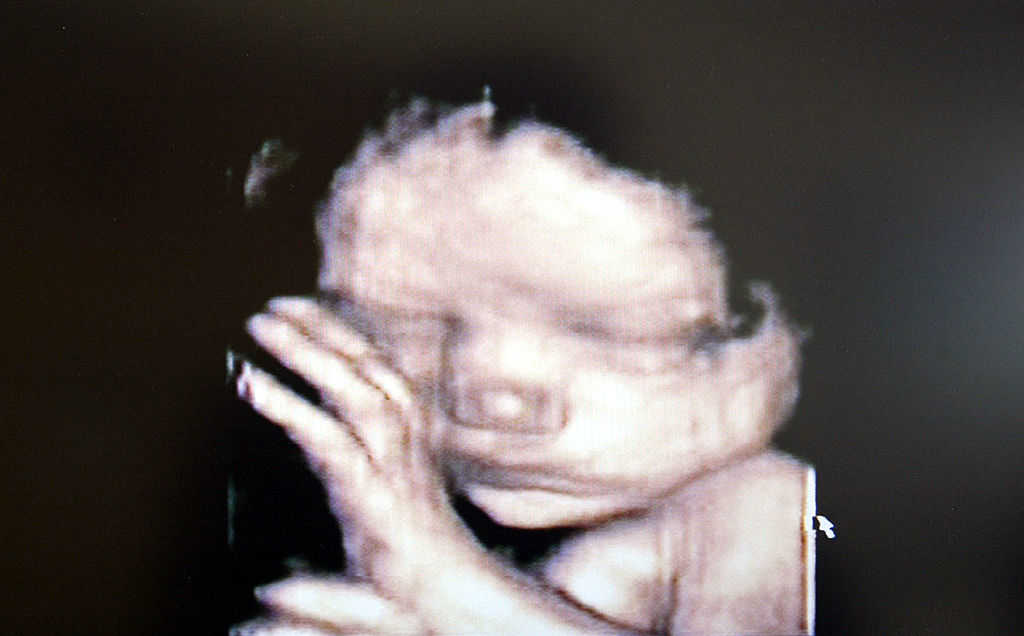Researchers at a U.K. university say they’ve found evidence that unborn babies have a penchant for looking at and responding to faces — or, at the least, light patterns that resemble the structure of the human face.
Experts at Lancaster University in Lancaster, U.K., have found that babies respond to face-like shapes — light designs that resemble eyes and a nose. Meanwhile, researchers found that unborn, third-trimester babies ignored random shapes, according to the Telegraph.
The conclusion? Unborn babies prefer to look at facial stimuli more than anything else, according to an article published in the journal “Current Biology.”
“In our study they had to move their head to keep looking at the face-like stimulus when we moved it away from them. So, they are active participants in finding information from the environment,” psychologist Vincent Reid, a lead researcher, told the Telegraph. “What this means is that other ways of interacting with the fetus can be considered.”
The study is important, Reid told The Atlantic, because “this is the first time that anyone’s been able to deliver an image to a fetus.”
Reid and his team embarked on a fascinating quest in their effort to reach these conclusions. First, they shot dots of light resembling the eyes and mouth of a human face through the walls of the uteri of 39 women who were 34 weeks pregnant.
In stunning fashion, the babies were found to turn their heads to look at these lights. But when the lights were turned upside down, making it harder to see the face, the Telegraph reported that the babies didn’t turn to look. The journal article has more:
The stimuli were projected in two orientations (“upright” and “inverted”) on the maternal abdomen. Both images were presented to the side of the fetal face, such that the stimuli were presented to the fetal retinal visual areas (left, n = 19; right, n = 20). The light was then moved across the maternal abdomen in a horizontal direction away from the fetal central visual location, for approximately 5 s at an average of 1 cm per second. This is consistent with speeds reported in newborn studies taking into account constraints specific to this population, i.e., the width of maternal abdomen that was accessible in order to present stimuli and the space within the womb available for the fetus to move. Timing was controlled via a stopwatch in view of the experimenter who was delivering the stimuli. This process was repeated a total of five times, with the procedure then immediately repeated with the alternate stimulus orientation. The presentation order for upright and inverted orientations of the stimuli was counterbalanced across the sample.
Reid said that a third-trimester fetus is able to “hear very well” and encouraged parents to read to these babies, as he said it can help with bonding. He also drove home the fact that these unborn babies have the ability to recognize shapes.
“We have now shown that the fetus can distinguish between different shapes, preferring to track face-like over non-face-like shapes,” Reid added.
In the end, though, he said that the bias towards the face-like lights could either be hardwired into the human brain or be a reaction to light that a baby routinely sees in the womb, becomes used to and then favors later on. Reid believes it is likely the latter, though the research isn’t able to definitively make a conclusion on the matter.
Either way, the research seems to drive home the fact that unborn, third-trimester babies prefer to look at human faces or similar structures above anything else. Read the study for yourself here.



